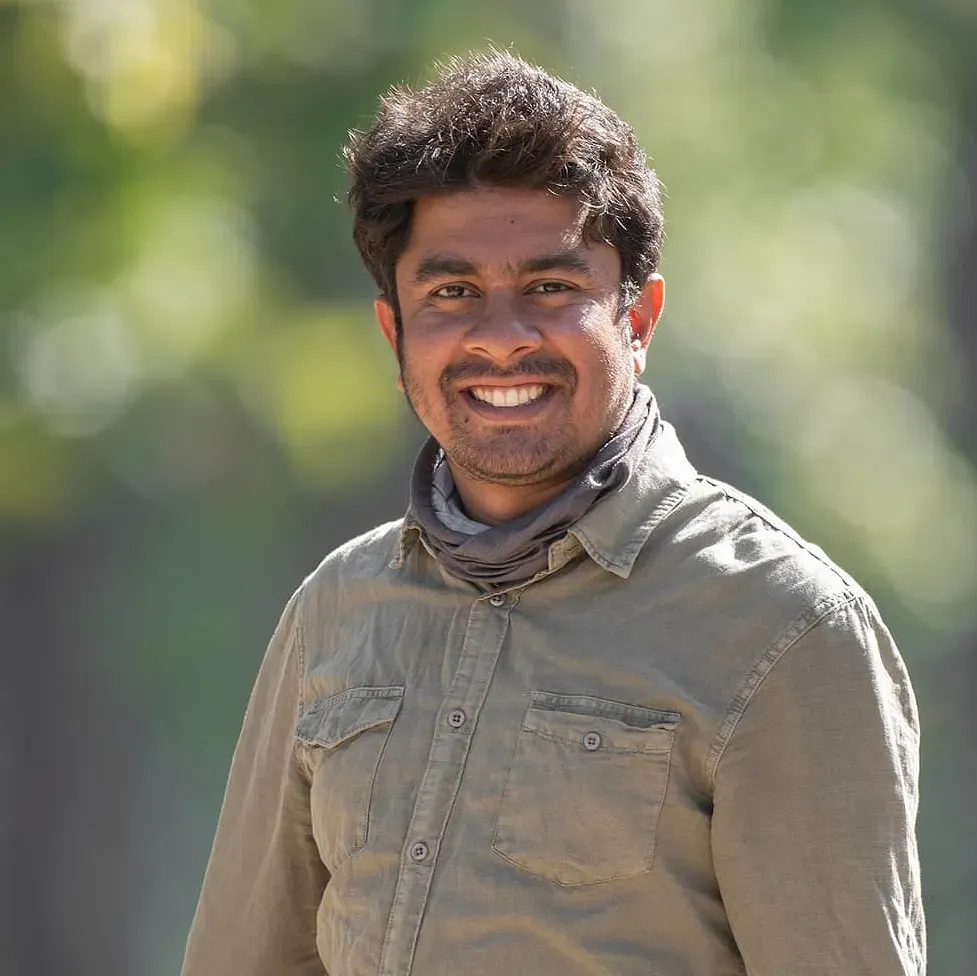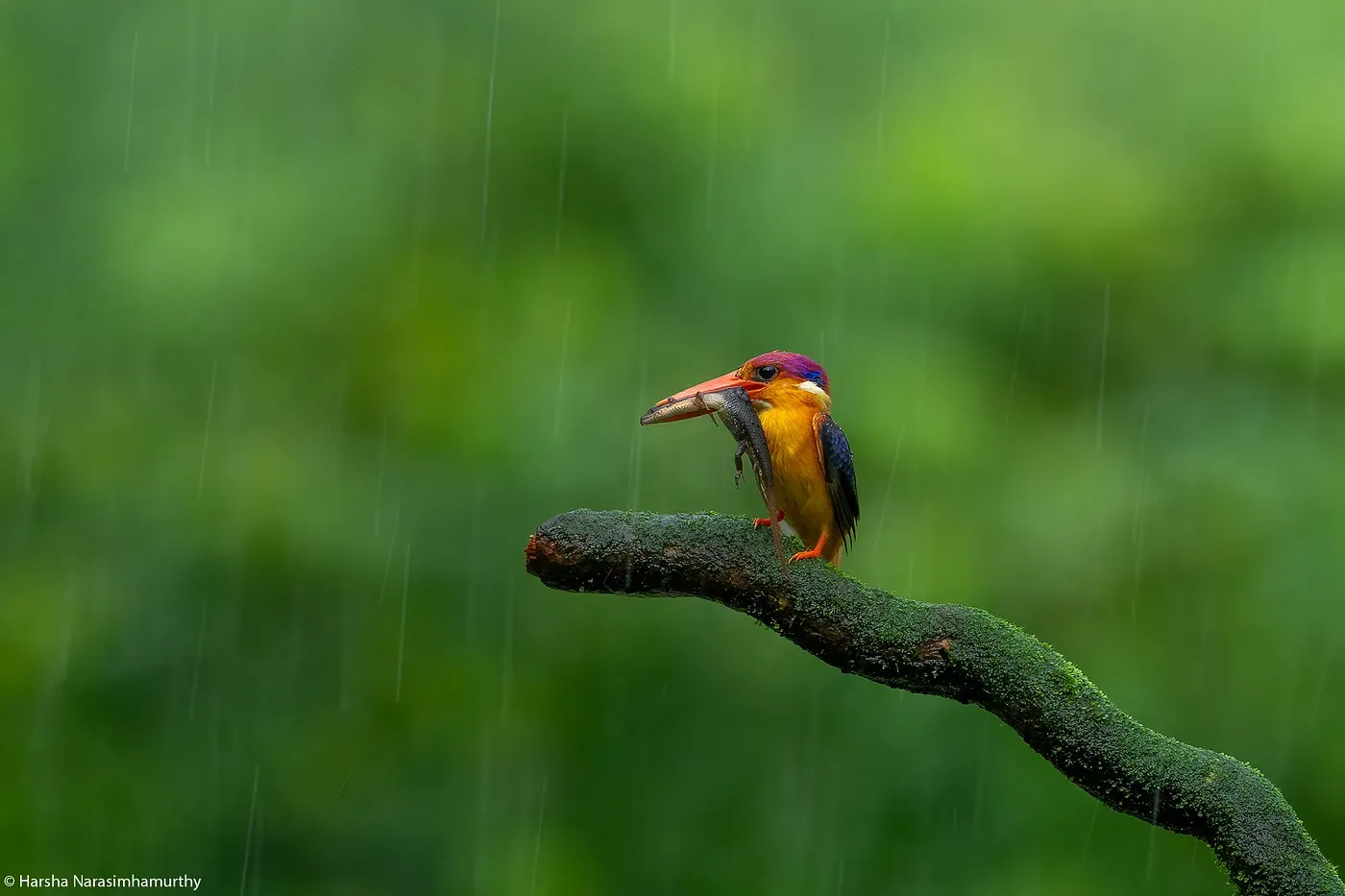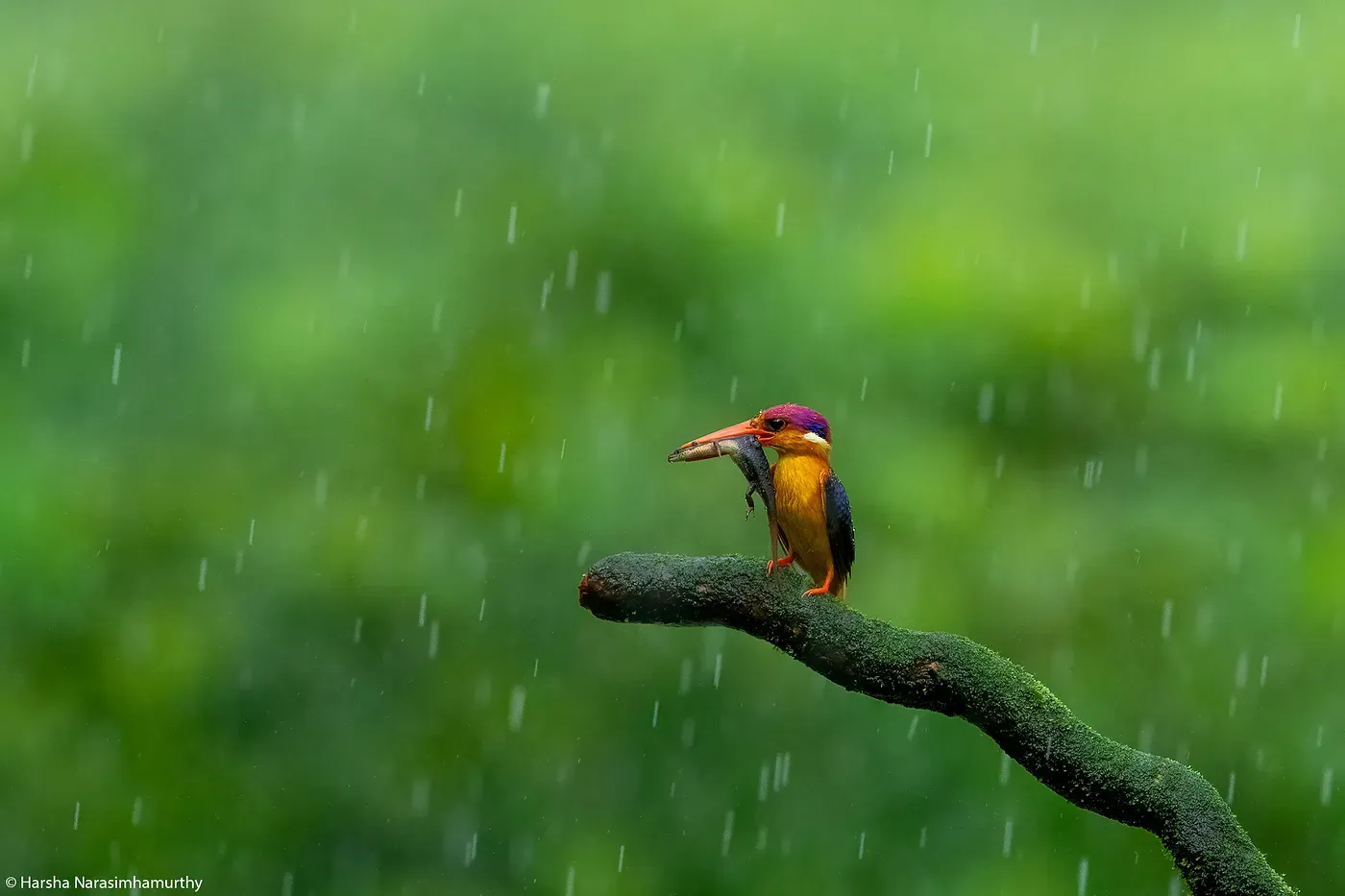Freeze or Blur: Mastering Shutter Speed with the Oriental Dwarf Kingfisher

During a recent bird photography workshop in the lush Konkan region, I had the chance to photograph one of the most striking little birds in India — the Oriental Dwarf Kingfisher (ODKF). Often called the “Jewel of the Konkan,” this tiny burst of color is a favourite among bird photographers, and getting the perfect shot requires not just luck, but also an understanding of your camera settings — especially shutter speed.
On this particular outing, I captured two images of the same ODKF at the same moment — both in Aperture Priority mode, but with different shutter speeds. The results clearly demonstrated how shutter speed can completely change the mood and clarity of an image, even when everything else stays the same.
Image 1: Slower Shutter Speed — Motion Blur & Atmosphere

In the first shot, a slightly slower shutter speed was selected by the camera, due to lower light conditions. If you look closely, you’ll notice that the rain droplets in the background appear blurred. This is known as motion blur — it happens when your subject (or something in the frame, like rain) moves while the shutter is open.
This intentional blur creates a dreamy, atmospheric effect. It adds a sense of movement and drama, and can be very effective if you want your image to be artistic.
Image 2: Faster Shutter Speed — Action Frozen in Time

In the second image, the shutter speed was faster, allowing the camera to freeze the motion of the rain. Every droplet is visible in detail, almost as if suspended mid-air. This kind of image gives a cleaner, sharper result, perfect when you want to showcase action, especially in wildlife or bird photography.
A fast shutter speed is often key when photographing fast-moving subjects like birds in flight, running mammals, or falling water.
Why Shutter Speed Matters
Understanding how shutter speed works — and how to control it either manually or through modes like Aperture Priority (Av or A mode) — is fundamental for storytelling through photography.
Here’s a simple breakdown:
- Slower Shutter Speeds (1/60s, 1/125s, etc.) suggested to make intentional motion blur, moody panning shots
- Faster Shutter Speeds (1/1000s, 1/2000s, etc.) suggested to capture action shots, freezing movement (birds, rain, water splashes)
When you’re in the field, like I was in Konkan, conditions change quickly. Light, movement, and subject behavior all affect how you should expose. I often use Aperture Priority mode and keep an eye on the shutter speed — if it’s too slow to freeze the action, I’ll bump up the ISO to achieve the desired shutter speed.
The key is to know your subject and decide what story you want to tell with your frame.
Do you want to show the stillness of a bird despite the storm? Or capture the chaotic energy of a downpour around it? Shutter speed is your storytelling tool.
Photography is more than just pointing and shooting — it’s about making conscious choices to convey emotion, energy, and story. The next time you’re out with your camera, play around with your shutter speeds. Experiment. Observe. You’ll start to notice how even a subtle change can shift the entire feel of a photograph.
And if you’re serious about learning bird or wildlife photography in the field, consider joining one of our Photo Safaris.

Harsha Narasimhamurthy
Harsha Narasimhamurthy is the founder of Catman Kronicles and a full-time wildlife photographer and photography mentor. With over a decade of experience in forests across India and Africa, he leads guided photo safaris and workshops designed for photographers of all levels.
